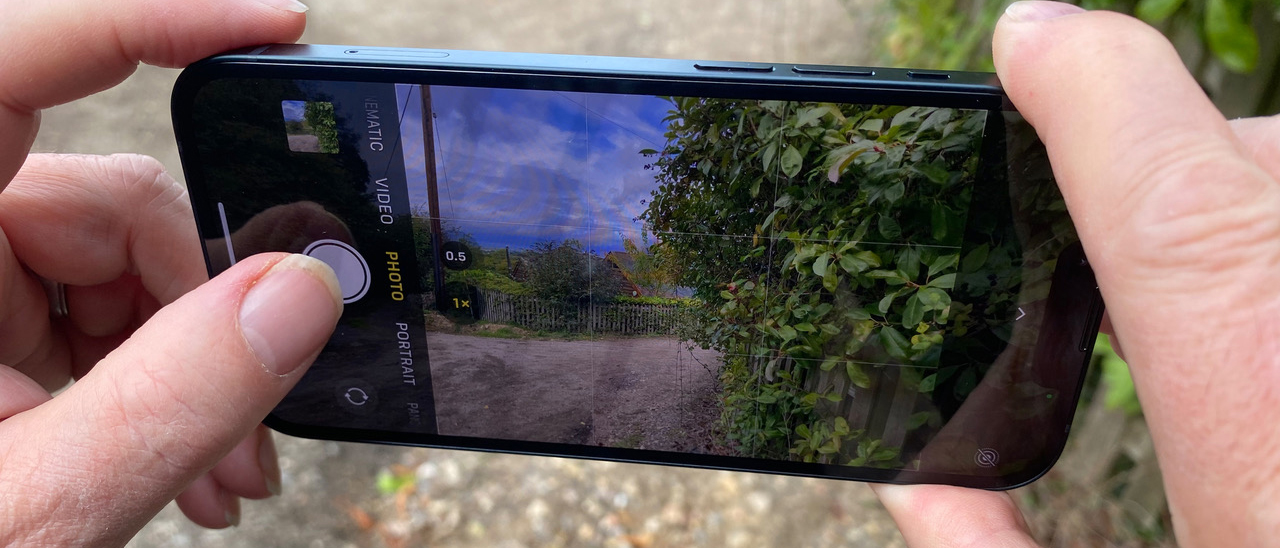Digital Camera World Verdict
As a camera, the iPhone 14 has a few exciting new features such as video Action mode and the option to capture 4K Cinematic mode footage at 24 fps but its lack of Macro mode, RAW format shooting, and a Telephoto camera will leave professional photographers plumping for the iPhone 14 Pro. However, if you use an iPhone 12 or older then you’ll notice and enjoy the difference in features and performance that the iPhone 14 has to offer.
Pros
- +
More affordable than the Pro versions
- +
Action mode for smoot handheld clips
- +
Effective Portrait mode blur
Cons
- -
No Macro mode
- -
No option to shoot in RAW
- -
No Sim tray in the US
Why you can trust Digital Camera World
Most of the iPhone-owning readers of this review will probably be keen to upgrade to the latest incarnation of their beloved device. The job of this review is to help you make an informed decision on whether to upgrade to an iPhone 14, hold out for the iPhone 15, or take the jump (and the financial hit) to go pro with the iPhone 14 Pro or iPhone 14 Pro Max. Of course, our guide to the best iPhone for photography should also help.
As you’re reading a Digital Camera World review we know that the iPhone 14’s role as a camera is particularly important, so we’ll put its two cameras through their paces later in our review (with an accompanying test video).
iPhone 14 Key features
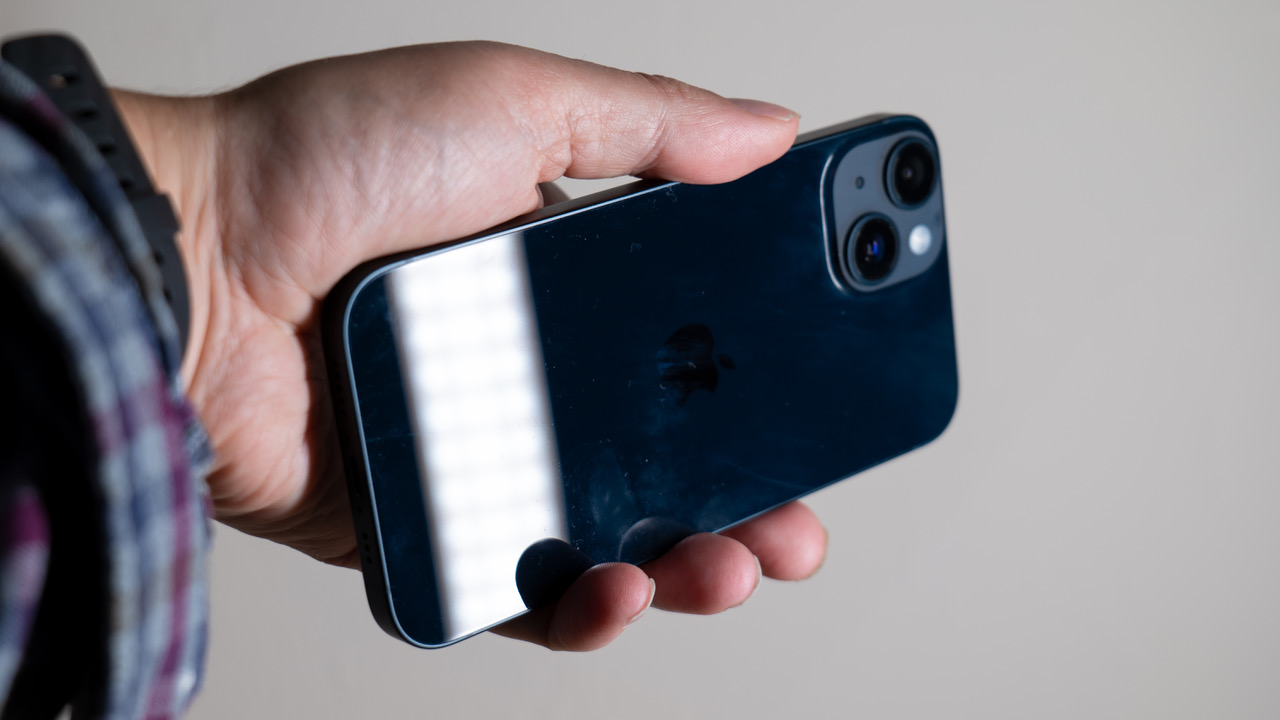
As with the other models in the 14 range, the iPhone 14 offers Crash Detection. It can detect the sudden impact of a crash due to a variety of factors including a new high g‑force accelerometer that senses extreme accelerations or decelerations up to 256 Gs. A high dynamic range gyroscope monitors drastic changes in your car’s orientation and the microphone can identify the sound of a collision.
The built-in barometer can even detect changes in pressure caused by the deployment of an airbag. All these features enable the iPhone 14 to recognize a crash, contact emergency services and broadcast your location. In an emergency situation with no signal, the iPhone also offers the option of contacting emergency services via satellite, though this feature may not currently be available in all regions.
iPhone 14 Design & screen
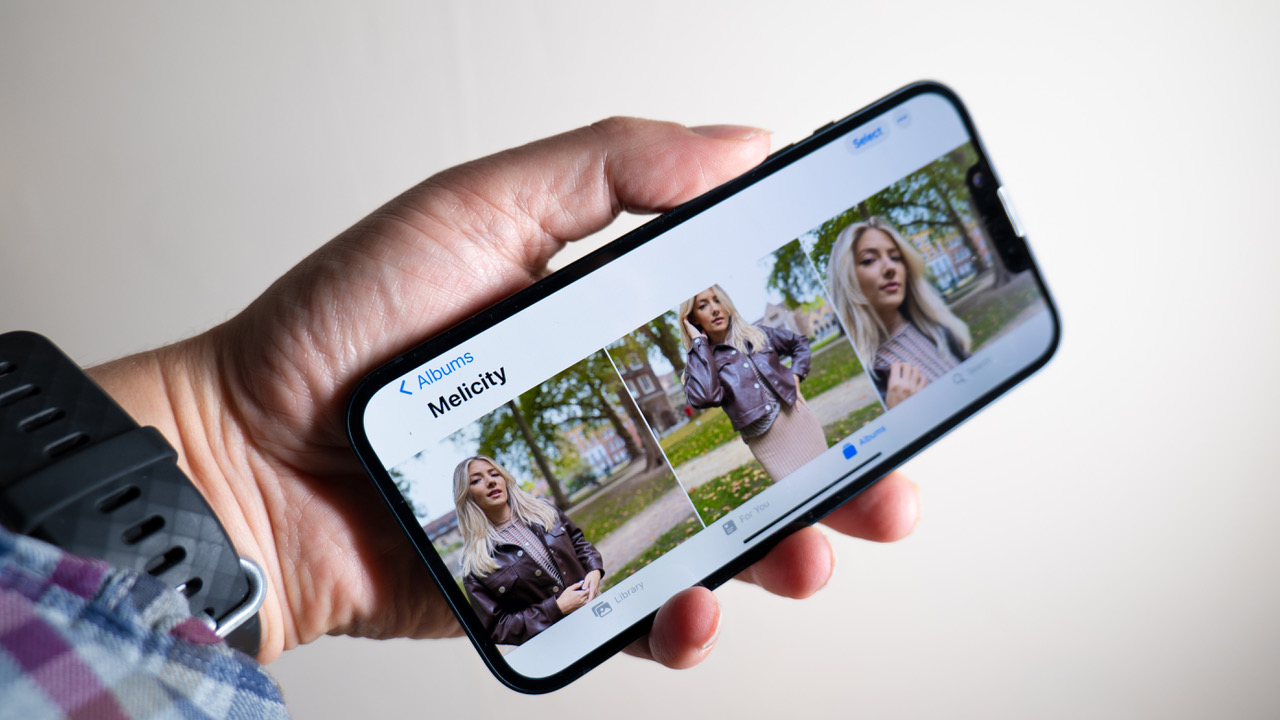
If you currently own an iPhone 13 then the iPhone 14 will feel very similar as it takes up the same width and height space in the palm of your hand. At 7.80 mm (0.31 inches) deep the iPhone 14 is slightly thicker than the iPhone 13’s 7.65 mm (0.30 inches) but this difference in size is negligible, as is the fact that the iPhone 14 is lighter by 1 gram! Indeed the iPhone 13 and 14 also have an identically sized 6.1” all-screen OLED display that showcases your High Dynamic Range (HDR) photos as richly colored shots that boast detail throughout the shadows, mid-tones, and highlights. With a 2,000,000:1 contrast ratio your shots really ‘pop’ when viewed on the iPhone 13 and 14’s display!
One difference between the iPhone 14 and its iPhone 13 predecessor is that the 14 comes in a different range of colors, including a lighter Blue and a unique Purple that will differentiate it from the 13. Both models are also available in Midnight, Starlight, and the eye-catching Product Red. Of course, a new color scheme on its own does not justify an upgrade but there are a few things that give the 14 the edge over the 13 as we’ll explain.
Thanks to its aerospace-grade aluminum body and front and back ceramic shield you should feel confident in not hiding your expensive purchase away in a protective case. I kept my iPhone 13 Pro Max case-less throughout last year and despite dropping it multiple times there was never any need to visit the repair shop. Your iPhone 14 is designed to be seen, not encased – especially if you go for the ‘look at me!’ Product Red model!
iPhone 14 camera specs
The advanced dual-camera system on the iPhone 14 is the main attraction for photographers. The 13mm focal length of the Ultra Wide camera enables you to capture more of an urban environment as a generously sized 12 MP photo, which at 3024 x 4032 is large enough to produce a decently sized print. The Main camera’s 26 mm focal length is great for portraits (and it lacks the people-stretching properties of the Ultra Wide camera’s lens, though this lens distortion is less noticeable on the iPhone 14 due to in-camera lens correction).
With an aperture of f1.5, you can use the Main Camera to capture grain-free indoor shots with an ISO level as low as 100. Sensor shift optical image stabilization also helps reduce the chance of shake-induced blur when taking pictures in low light, as well as keeping handheld video looking gimbal-smooth. Compared to the iPhone 13’s True Depth front camera the iPhone 14 can capture better-looking (and closer) selfies thanks to its new autofocus system.
iPhone 14 camera performance

If you’re an iPhone 13 Pro user and are attracted to the iPhone 14 due to its relative affordability compared to the 14 Pro then think twice. If you enjoyed using the 13 Pro’s additional 3x camera telephoto camera then you’ll feel limited by the 14’s lack of optical zoom. You can dial in 3x digital zoom on the iPhone 14’s Main camera but the digitally magnified results will be inferior in quality to those produced by the 13 Pro’s optical 3x telephoto lens. 13 Pro users will also miss the option to shoot in RAW (.dng format) if they upgrade to the iPhone 14. The iPhone 14 restricts you to capturing compressed .jpeg or HEIF files which limits your ability to tease out more tonal detail using post-production apps such as Adobe Photoshop or Lightroom. The iPhone 14 also lacks the option of shooting in Macro shooting mode (which on the 13 Pro enables you get better-looking close-encounters with subjects such as insects and flowers.)
Those reservations and limitations aside the iPhone 14 does in general capture great-looking shots thanks to the Main camera’s 7-element lens and clever ‘under the hood’ processing. The new Photonic Engine is an enhanced image pipeline that is unique to the 14 series. It helps the iPhone 14 capture better-looking shots in low light. The iPhone 14 also enables an increase in quality by applying the computational benefits of Deep Fusion earlier in the imaging process to deliver more detail, preserve subtle textures, provide better color and maintain more information in a photo. Despite the Photonic Engine the iPhone 14 did occasionally produce disappointing low light results during our test shoots.
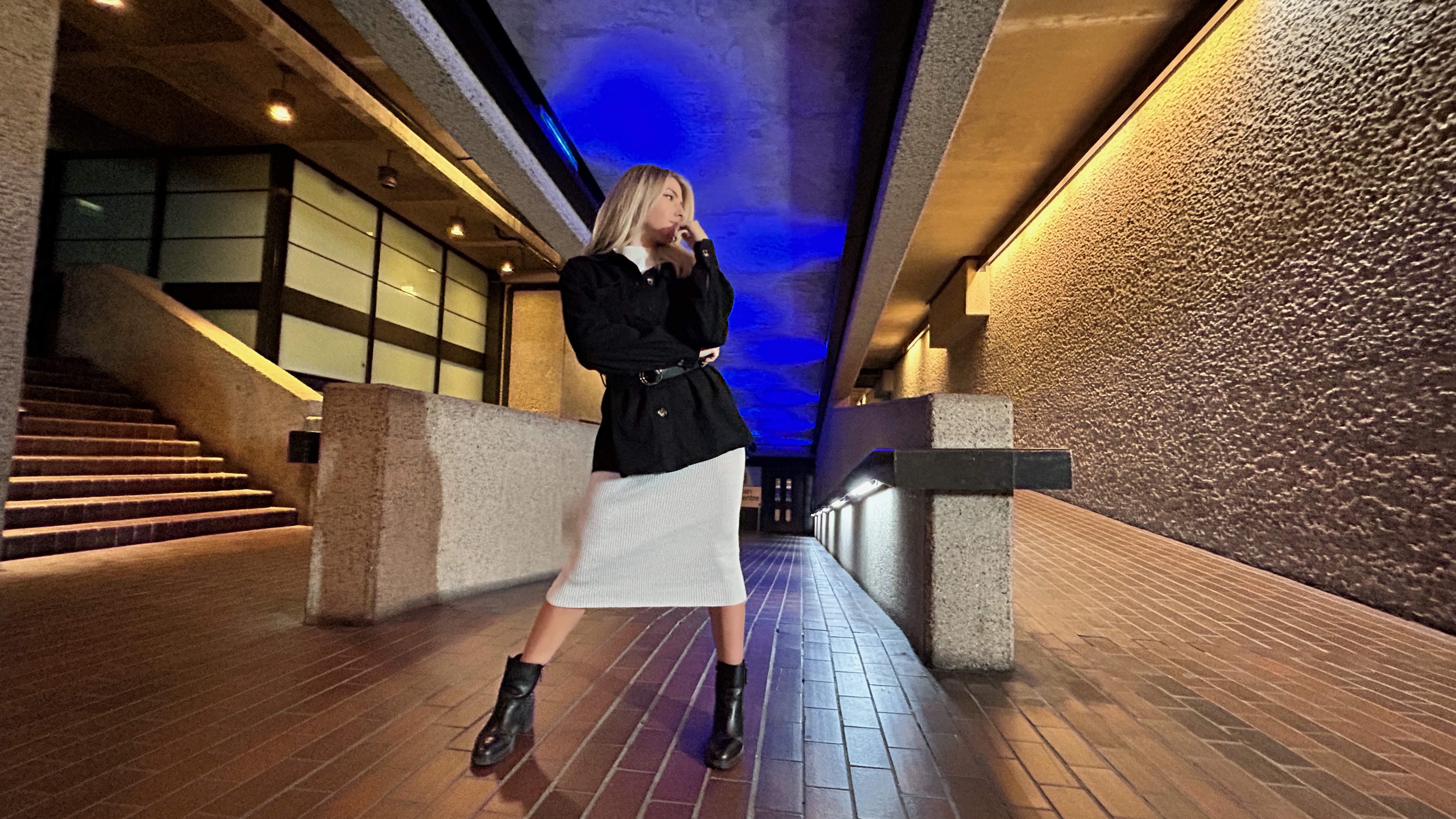
These featured prominent grainy noise artefacts that were exacerbated by a high ISO speed such as 1250. The noise was more noticeable on the Ultra Wide camera which had a maximum aperture value of f2.4, forcing the iPhone 14 to use a faster (and grainier) ISO. When shooting in the same indoor location with the Main cameras’ wider f1.5 aperture we got lower ISO speeds and much cleaner results.
For our iPhone 14 test shoot, we hired a model and took photographs in a range of urban locations. I also snapped some shots of the same subject on my older iPhone 13 Pro Max for comparison. Once the photos had synced via iCloud and were jumbled together in my Photos Library I was hard pressed to differentiate between photos shot on the iPhone 13 Pro Max and captured by the iPhone 14 (unless I dug into their metadata using the Photos app’s Info panel!). This is a testament to the general high quality of the iPhone 14’s cameras and processing power.
One exciting new feature I enjoyed when shooting in the iPhone 14 Camera app’s Portrait Mode is the presence of both foreground and background blur in photographs. The iPhone 14 was instantly able to identify our subject’s face and keep that looking nice and sharp while blurring her foreground hand and the background buildings. This helped mimic the natural bokeh of a DSLR more effectively than previous versions of Portrait Mode. This more realistic foreground and background blurring is actually the result of iOS 16. If you upgrade to a version you can enjoy this selective focus effect using older iPhone models too without needing to upgrade to an iPhone 14.
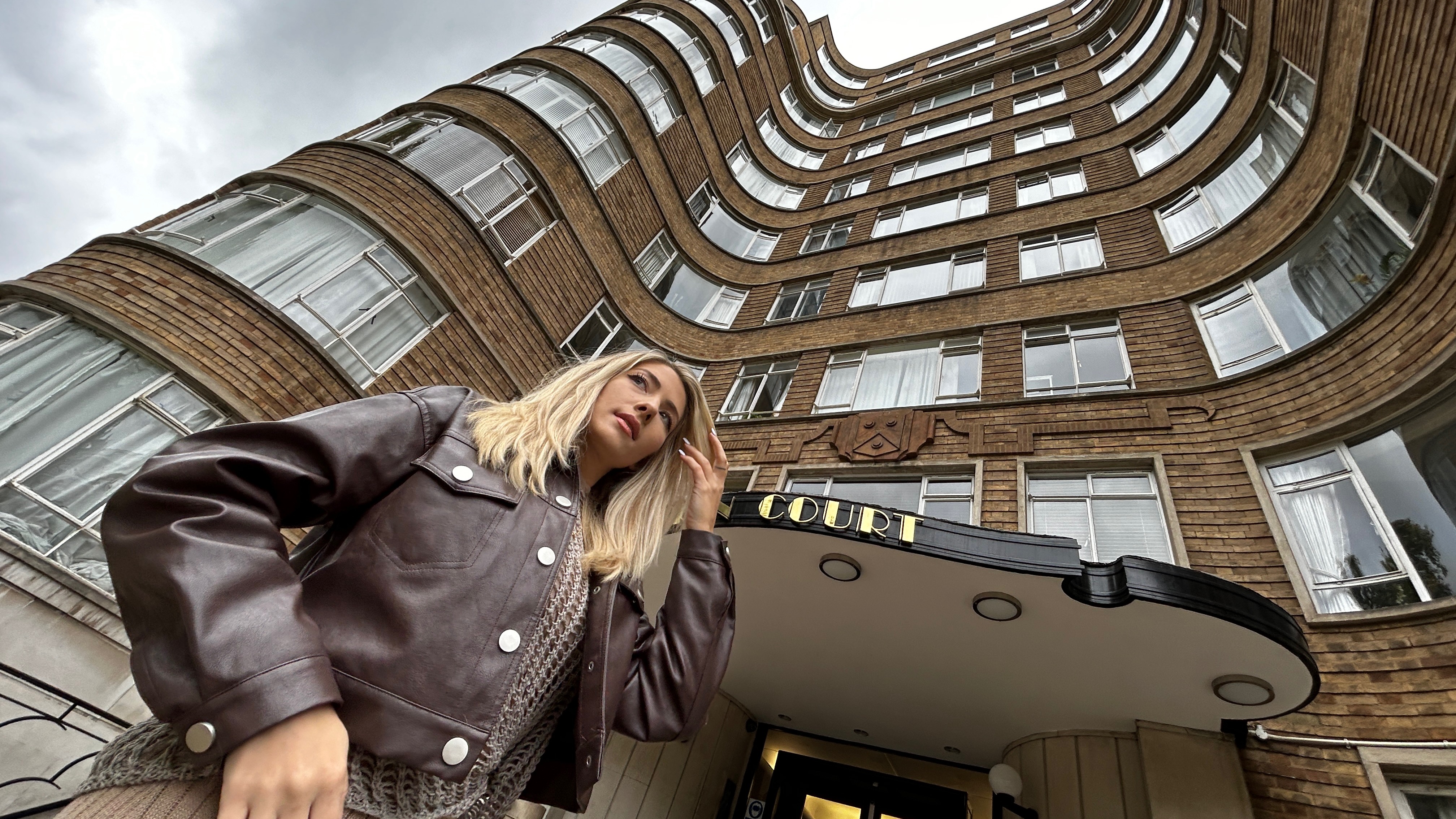
One area where the iPhone 14 does excel over its predecessors is in its new Action mode. This enables you to capture gimbal smooth video clips while carrying the iPhone 14 on the run. When you activate Action Mode on the iPhone 14 it switches to the Ultra Wide 0.5x lens. This enables it to capture more area around the edge of the subject so that it can crop the image and reposition the subject’s position on a frame-by-frame basis to keep them moving smoothly.
In our test shoot, the subject whipped left and right due to the camera shake as we chased them through a field (see this review’s supporting video). The processed Action mode clip kept the runner in the center of the frame as the camera glided smoothly along. This in-camera stabilization will save filmmakers the time and hassle of using post-production stabilization tools in iMovie or Final Cut Pro, enabling them to share their movie clips there and then. The only downside to Action Mode is that it will drop your resolution from 4K to 2.8K, but that will still look great in a standard 1080 HD project.
Another selling point for the iPhone 14 is the new option to shoot 4K Cinematic mode footage at the more filmic frame rate of 24 fps (as well as the 25 fps for PAL or the common rate of 30 fps for general media output such as web). The cinematic mode adds a post-production bokeh blur to the background of your video footage creating a Hollywood-style shallow depth of field. You can also capture full HD resolution footage when shooting in Slo-Mo mode at 120 fps, so your slow-motion sequences will look great when added to a 1080 HD project’s timeline.
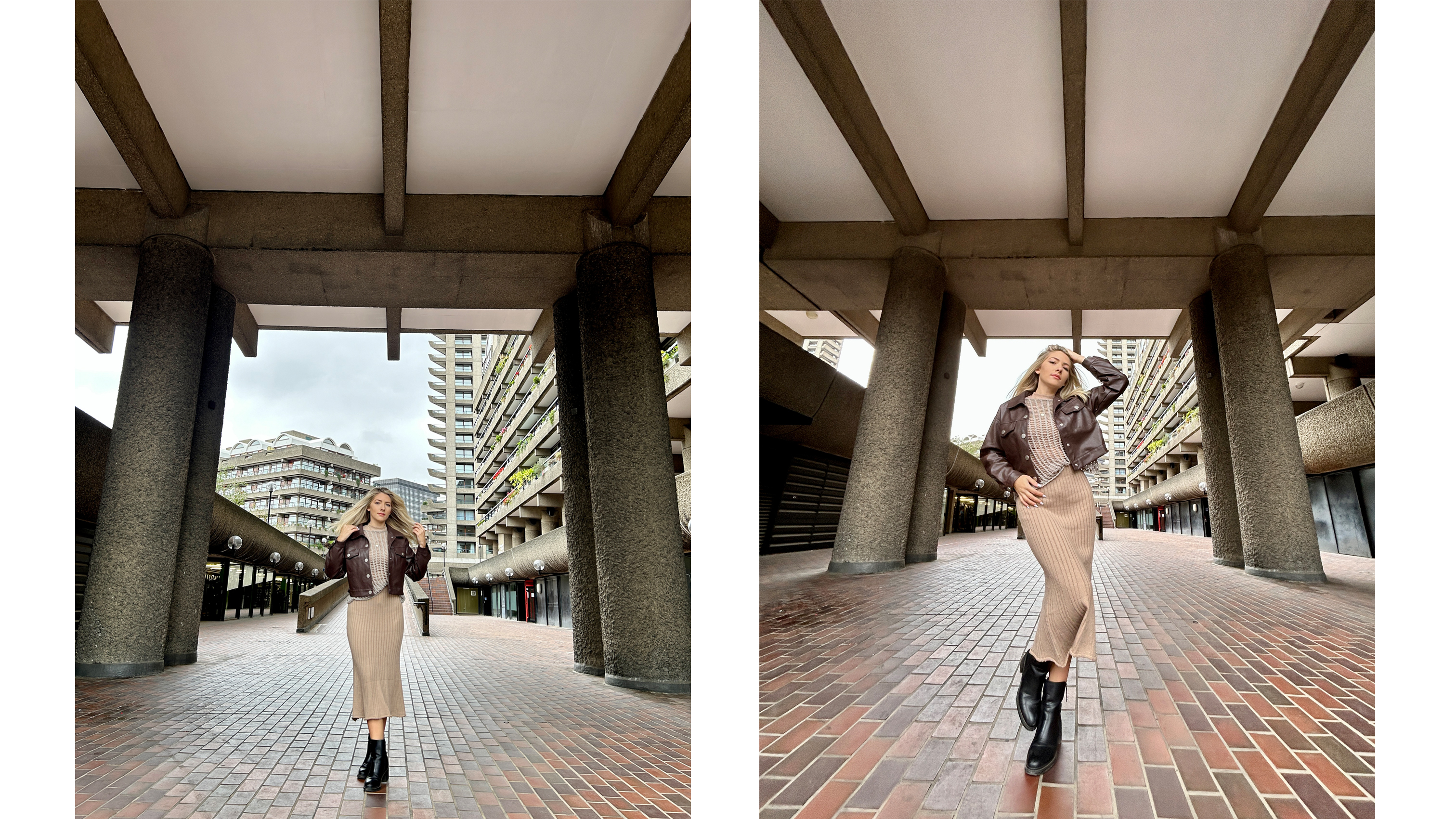

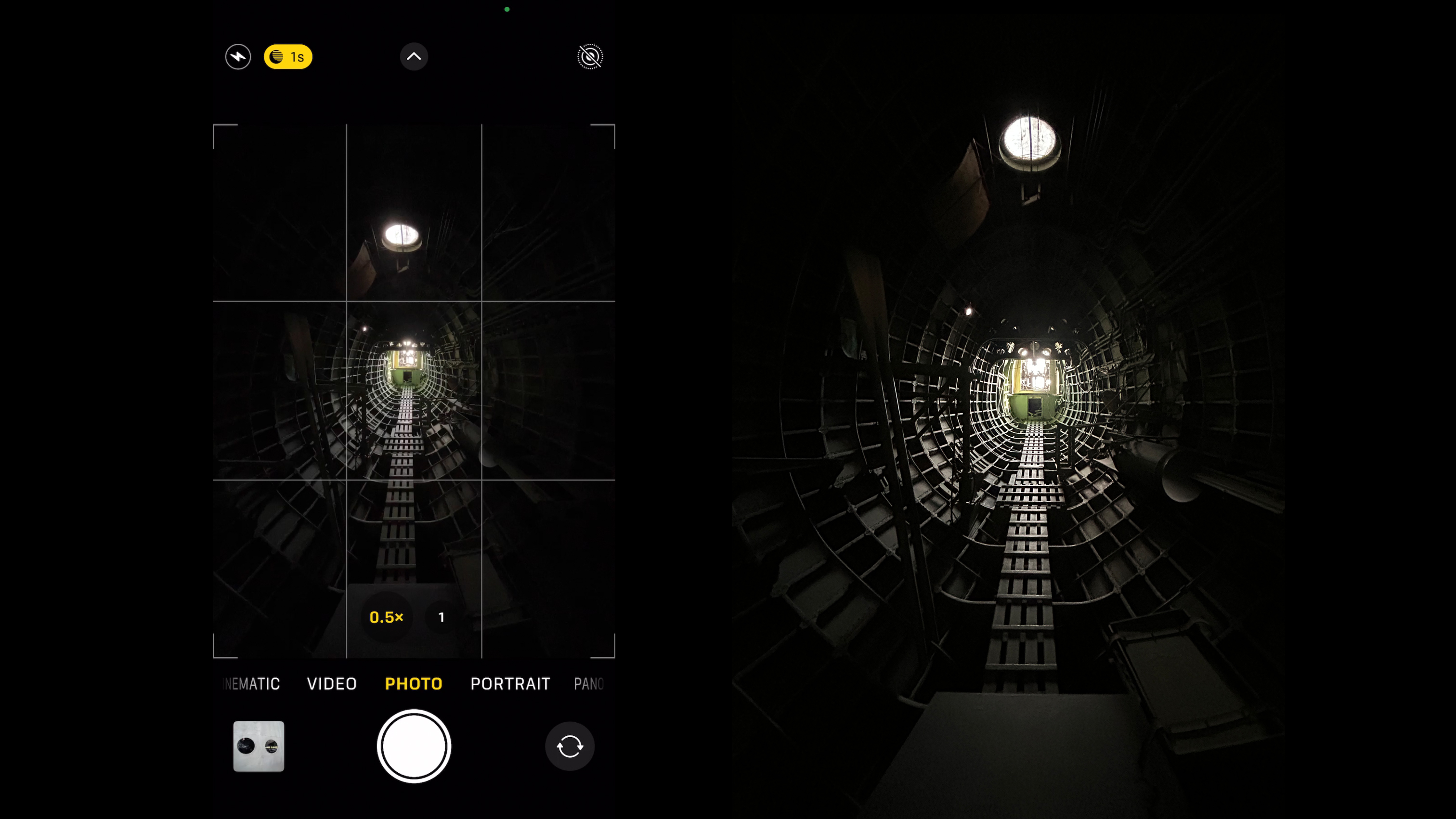
iPhone 14 sample video footage
iPhone 14 rivals
The iPhone 14 has the edge on the iPhone 13, but perhaps not enough of an edge for you to upgrade from a 13 to a 14. Both models have the A15 Bionic chip, a 6-core CPU and a 16-core neural engine. The iPhone 14 has a 5-core GPU compared to the iPhone 13’s 4-core GPU, so it should offer better performance and efficiency for demanding workloads.
You also get an extra hour of video playback on the iPhone 14 compared to the 13, but again this doesn’t make the 14 a ‘must have’. However if you’re still using an older model such as the iPhone 12, you’ll notice the difference in battery life and general processing performance due to the older model’s A14 Bionic chip. The iPhone 12 offers up to 17 hours of view playback compared to the iPhone 14’s 20 hours, which makes the iPhone 14 a more attractive purchase for owners of older iPhones.
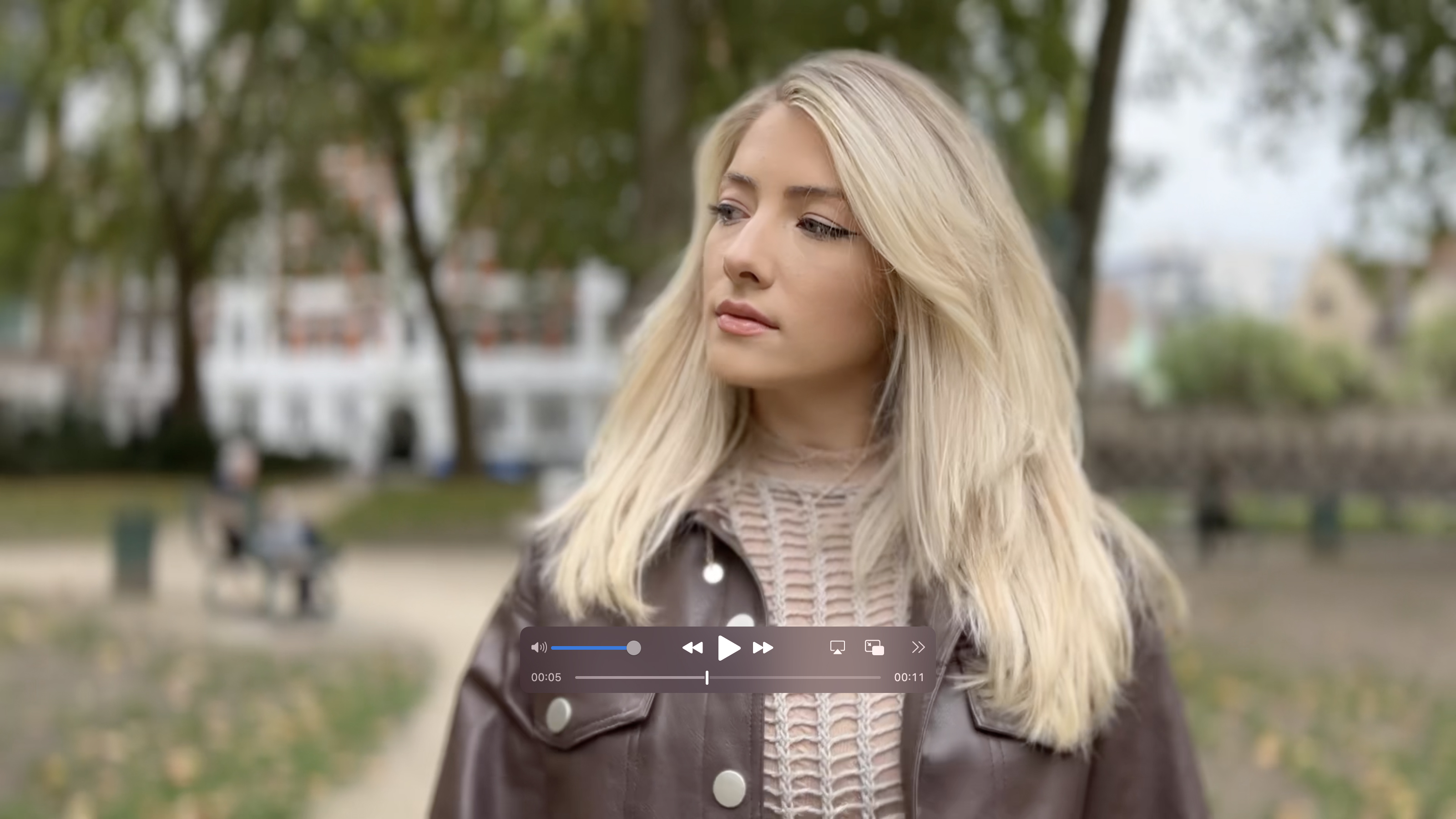
iPhone 14 Verdict
From a photography point of view, the iPhone 14 is a great piece of kit, especially if you just want to point, shoot and share great-looking shots via social media without doing much post-processing. However, the more serious photographer will miss the ability to shoot in RAW (.dng) format so that they can enjoy fine-tuning the look of their images in a digital darkroom such as Adobe Camera Raw.
Images on the iPhone 14’s Super Retina XDR display look great, but you may need to view them on a larger display if you want to discover and remove noise artefacts or retouch a portrait more effectively. In this instance, you might consider paying an extra £100 for the iPhone 14 Plus, which has the same camera specs but boasts a larger 6.7” display (and it provides an extra 6 hours of video playback). The iPhone 14 should be more attractive to those who want to upgrade from an iPhone 12 or older as they will notice a bigger difference in performance and features than those upgrading from an iPhone13.
The iPhone 14’s new Action mode produces amazingly smooth handheld footage which alleviates the need to stabilize it in a non-linear editing app, but serious filmmakers may also want the option to shoot in HDR Dolby Vision, which will lead them in the direction of the iPhone 14 Pro or Pro Max. The iPhone 14’s lack of a Telephoto camera and Macro mode will also cause many photographers to cough up the extra cash for a Pro model iPhone.
You might also like to find out about the iPhone 13 Pro vs 14 Pro and the best camera phones from all manufacturers. Looking for the best budget camera phones? Try these!
George has been freelancing as a photo fixing and creative tutorial writer since 2002, working for award winning titles such as Digital Camera, PhotoPlus, N-Photo and Practical Photoshop. He's expert in communicating the ins and outs of Photoshop and Lightroom, as well as producing video production tutorials on Final Cut Pro and iMovie for magazines such as iCreate and Mac Format. He also produces regular and exclusive Photoshop CC tutorials for his YouTube channel.
